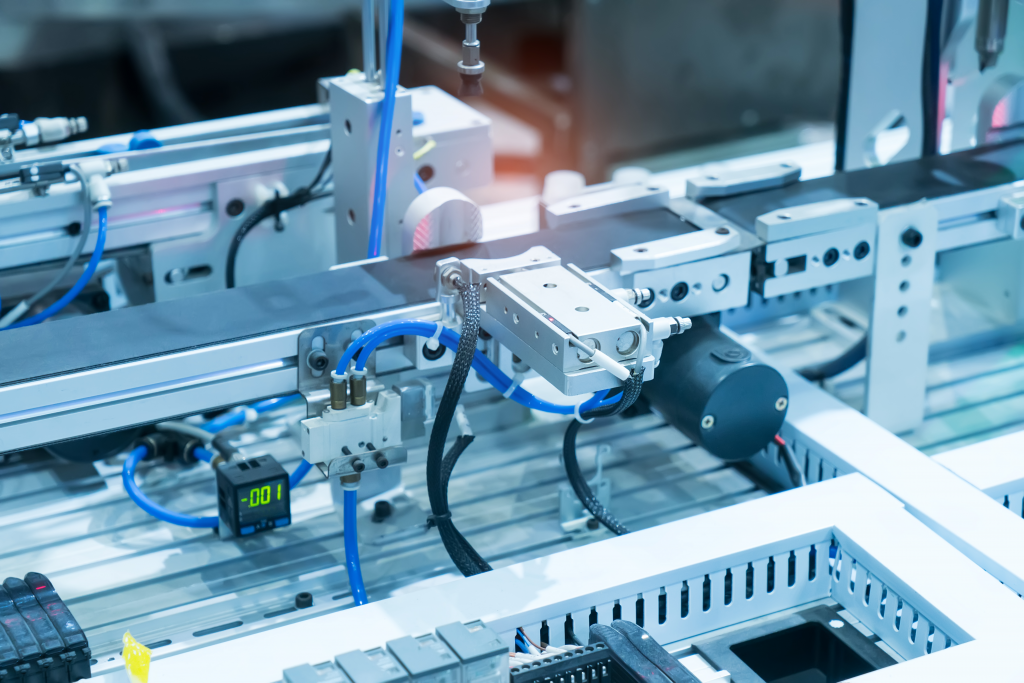Unlocking Automation Efficiency with Pneumatic Valve Technology
As decarbonization continues to be a growing trend across all industries, there is a desire to increase energy efficiency throughout industrial facilities. Pneumatic systems, which are used to drive automated equipment, air-powered tools and other systems common to industry, are prime targets as they are known energy hogs. While most facility managers understand the importance of eliminating leaks and reducing pressure in pneumatic systems, many don’t consider that the right pneumatic valve technology can also help to improve the efficiency of pneumatic systems, the automated equipment they power and, as a result, the entire facility.

What is a Pneumatic System?
Pneumatic systems use compressed air to create energy that serves as the driving force that powers automated equipment and robots, material handling machines, machine tooling operations, air-powered tools and other industrial equipment. The main components of a pneumatic system include an air compressor, air treatment equipment, pneumatic control valves, sensors, actuators and piping systems.
Atmospheric air is taken into the air compressor where it is compressed and pressurized and then delivered to automated equipment in the plant via the piping system. Control valves regulate the flow and direction of the treated air, as well as the system pressure to ensure that it meets the specifications of the application. Sensors detect changes in pressure, dew point, temperature or other variables and activate devices, such as pumps, alarms or motors, when needed. Actuators serve to open and close valves or move mechanical components to create motion in the equipment.
In industrial automation, the role of pneumatic valves should not be overlooked. By tightly regulating the rate, flow and direction of compressed air, pneumatic valves permit the precise motion needed to control robotics, conveyors and other automated manufacturing equipment.
Pneumatic systems offer many advantages, including:
- Safety: Because pneumatic systems are air operated, they are safe to use in areas where the risk of fire or explosion exists.
- Reliability: Pneumatic systems operate with little difficulty and few issues in harsh industrial conditions when maintained properly.
However, when not properly managed, maintained or equipped, pneumatic systems can consume high amounts of energy. U.S. Department of Energy (DOE) statistics state that about 10% to 30% of the electricity consumed in a typical industrial facility is used for generating compressed air.
How Pneumatic Valves Optimize Efficiency
Repairing and preventing air leaks and reducing the pressure of pneumatic systems will help improve energy efficiency, but pneumatic valves can also play an important role in reducing energy consumption in these systems.
One might wonder how a small component can impact the energy efficiency of the entire system or plant, but it’s simple. Pneumatic valves provide precise control over the rate, pressure and flow of air through the pneumatic system, and by tightly controlling the air flow and pressure in this way they ensure that the right amount of energy is used, preventing wasted energy and optimizing performance and efficiency on several levels.
First, pneumatic valves help reduce wasted energy by allowing only the necessary amount of air, at the appropriate pressure, through the system, reducing wasted energy and maximizing the efficiency of the pneumatic system.
Second, since pneumatic valves precisely control the pressure, rate and air flow that is delivered to automated equipment, they play a pivotal role in controlling that equipment, thus optimizing the performance and energy efficiency of the facility’s automated equipment.
While the contribution of a single valve to energy efficiency efforts may not seem significant, there are likely hundreds or thousands of pneumatic valves used throughout industrial facilities, so the overall energy savings can be maximized and will positively impact a facility’s decarbonization efforts.
Advanced Pneumatic Valves Support Efficiency Goals
As the importance of energy efficiency in automation and industry continues to surge, providers of pneumatic valves are incorporating advanced features into their pneumatic valve offerings to support sustainability goals.
Newer, low-power pneumatic valves consume less power than traditional pneumatic valves yet offer the same level of performance. This feature can be especially helpful in large industrial applications where there are a significant number of valves in operation.
Further, many modern pneumatic valves offer digital features that allow users to track operational performance, which can help identify maintenance or other issues that would cause the valves to fail or consume more energy than necessary. By addressing issues that might otherwise go unnoticed, the performance and energy usage of the valve and automated equipment it supplies can be optimized.
Reliable Pneumatic Valves for Automation
When pneumatic valves are needed to optimize both the performance and efficiency of a facility’s automation, it’s crucial to purchase reliable, advanced technology valves from a trusted manufacturer. Emerson Aventics, ASCO Numatics valves integrate with hundreds of process, industrial, and automation applications to help manufacturers ensure high-performance operations while improving the energy efficiency of their pneumatic systems, automated equipment and facility. To learn more about supporting sustainability goals through advanced pneumatic valves, please contact JHFOSTER, a Tavoron company, today.
